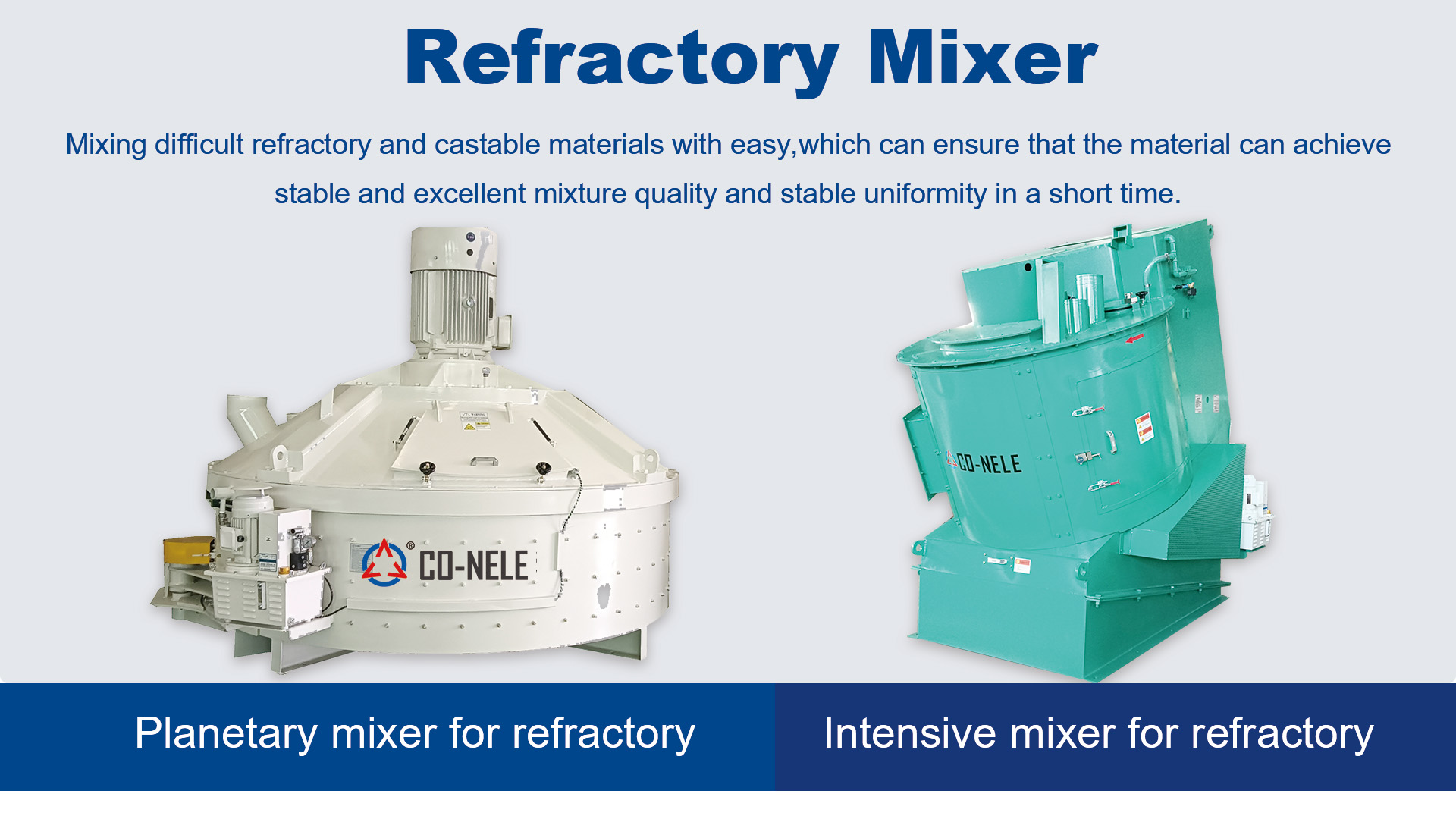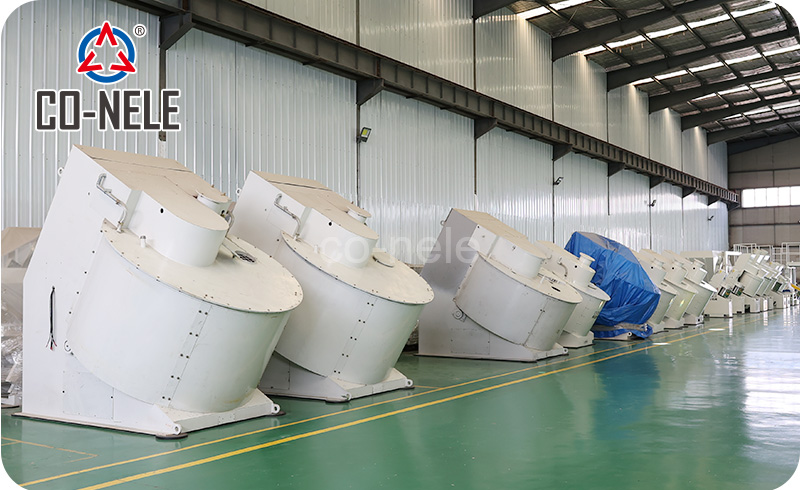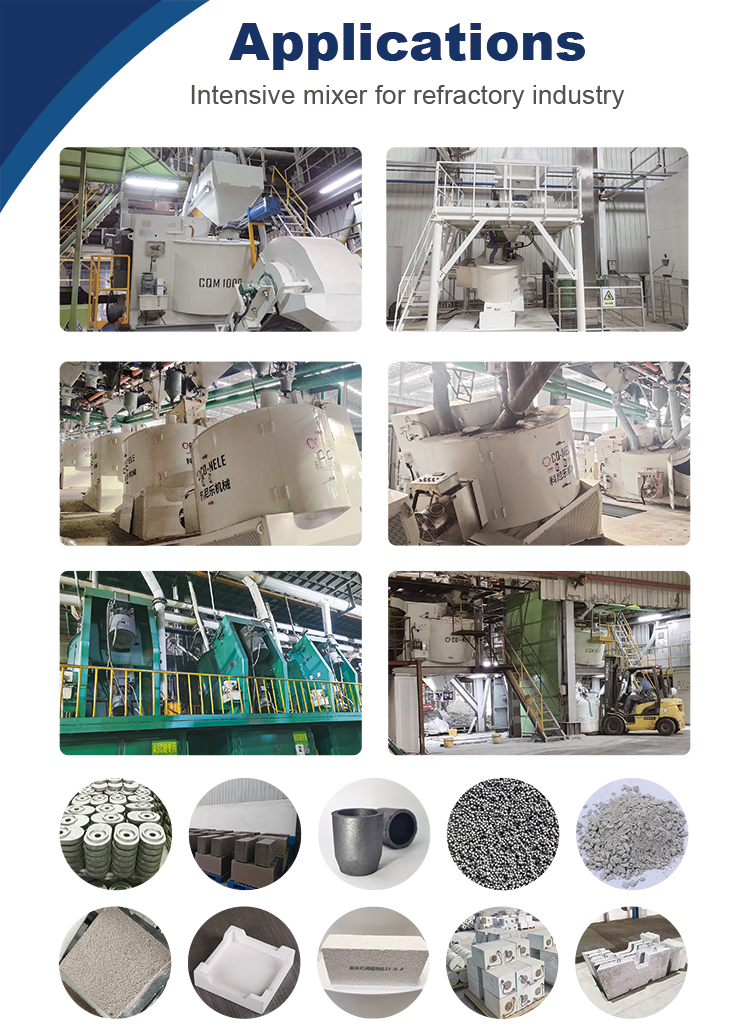Close search
Refractory mixers play a vital role in the production of magnesia carbon bricks.
1. Characteristics and production requirements of magnesia carbon bricks
Magnesium carbon bricks have good slag resistance, thermal shock resistance and oxidation resistance, and are widely used in high-temperature industrial fields such as steel metallurgy. Its production process has extremely high requirements for the mixing uniformity of raw materials, because uneven mixing will cause magnesia carbon bricks to have unstable performance and local damage during use.

2. Advantages of refractory mixers
High-efficiency mixing capacity
Refractory mixers can quickly mix raw materials of different particle sizes and densities such as magnesia sand and graphite. Its unique mixing structure and design parameters ensure high-quality mixing effects in a short time.
For example, the use of strong stirring paddles and high-speed rotation makes the raw materials tumble, collide and shear continuously in the mixer, so as to achieve uniform mixing at the microscopic level.
Accurate batching control
In the production of magnesia carbon bricks, the proportion of different raw materials has a great influence on product performance. Refractory mixers are usually equipped with advanced batching systems, which can accurately control the amount of various raw materials added to ensure the accuracy of the formula.
The batching system can automatically measure and add raw materials according to the preset formula, which greatly improves the production efficiency and stability of product quality.

Adapt to different production scales
Whether it is small laboratory production or large-scale industrial production, you can find a suitable refractory mixer model. Mixers of different capacities and powers can be selected according to production needs to meet the requirements of different scales of magnesia carbon brick production.
Good wear resistance and corrosion resistance
Because the raw materials of magnesia carbon bricks contain substances such as magnesia sand with high hardness, the wear on the mixer is relatively large. The refractory mixer adopts special wear-resistant materials and surface treatment technology, has excellent wear resistance and corrosion resistance, and can operate stably for a long time under harsh production environments.

3. Specific application process of refractory mixer in magnesia carbon brick production
Raw material preparation
Prepare raw materials such as magnesia sand, graphite, binder, etc. in a certain proportion, and perform preliminary screening and crushing to ensure that the particle size of the raw materials meets the production requirements.
Batching
Through the batching system of the refractory mixer, accurately measure the amount of various raw materials to be added and send them into the refractory mixer.
Mixing process
Start the mixer, and the stirring paddle starts to rotate at high speed to fully mix the different raw materials. The mixing time and speed can be adjusted according to the specific production process requirements.
During the mixing process, pay close attention to the mixing effect to ensure that the raw materials are mixed evenly without obvious stratification and agglomeration.
Discharging and molding
The evenly mixed raw materials are discharged from the mixer and enter the molding equipment for pressing or casting to form a magnesia carbon brick body.
Subsequent processing
The formed magnesia carbon brick body undergoes subsequent processing processes such as drying and sintering, and finally becomes a magnesia carbon brick product with excellent performance.
In summary, the refractory mixer plays an important role in the production of magnesia carbon bricks. It can provide efficient and uniform mixing effects for the production of magnesia carbon bricks and ensure the stability and reliability of product quality.
We will contact you within 24 hours.